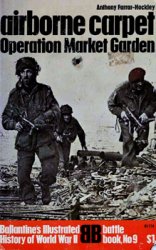Murder of Wesley Bad Heart Bull
The prelude to the occupation of Wounded Knee was a legal case involving the murder of Wesley Bad Heart Bull, an Oglala who was killed in Buffalo Gap, South Dakota, on January 21, 1973. Bad Heart Bull had been in Bill’s Bar the night before, where he had a confrontation with Darld Schmitz. The next day, he was found in front of the bar, fatally stabbed. He died shortly afterward, and Schmitz was arrested. Schmitz admitted stabbing Bad Heart Bull but was charged with second-degree manslaughter, with the killing being treated as more of a barroom brawl than a murder. Schmitz was released on bail.
Banks was notified that AIM might be able to help bring about justice for the family of the victim, including his mother, Sarah Bad Heart Bull. Banks flew to Rapid City, South Dakota, and then went to Custer, the county seat, for the arraignment. Banks and about 200 supporters arrived at Custer on February 6 in the early afternoon. Banks had notified officials of his planned arrival, which he anticipated to be about 9:00 a. m., but was delayed several hours because of a blizzard.
The planned meeting with County Attorney Hobart Gates quickly turned confrontational. Gates allowed only a small number of AIM representatives
Into the courthouse and refused to raise the charge to murder. When Russell Means attempted to bring Sarah Bad Heart Bull into the courthouse, they were stopped by state troopers. Many of those who arrived with Banks then attempted to enter but were also met by state police. As fighting broke out, a trooper threw the murder victim’s mother down the steps.
The confrontation grew increasingly violent, with fighting continuing for the remainder of the afternoon. Unsuccessful attempts were made to burn down the courthouse, but a city sign reading “WELCOME TO CUSTER, THE TOWN WITH THE GUNSMOKE FLAVOR” and a small Chamber of Commerce building were burned. The riot resulted in 22 arrests, 20 of them involving Indians, including Banks, Means, and Sarah Bad Heart Bull. Sarah Bad Heart Bull eventually served five months in prison—five months more than the killer of her son served, as he was acquitted by an all-white jury.
Why Wounded Knee?
As bad as the situation was for Indians in much of South Dakota, conditions were little better for most on the Oglala Pine Ridge Reservation. There Richard Wilson, the tribal leader, ruled with an iron hand and, it was widely believed, enough fraud and intimidation to keep himself in power. Especially crucial to Wilson’s success was his personal police force, the Guardians of the Oglala Nation, whose members were derisively known through an acronym for the hated group’s name as Wilson’s Goon Squad.
The Oglala Sioux Civil Rights Organization (OSCRO), which had been founded by Pedro Bissonette to support Oglala rights, maintain traditional values, and oppose Wilson’s autocratic rule, appealed to AIM for help. Consequently, Banks attended a meeting on February 27, 1973, at the town of Calico, South Dakota, a few miles from Pine Ridge to discuss what action they might take. Among those arguing for action were Frank Fools Crow, an elderly and highly respected medicine man from Pine Ridge, and several women from the reservation.
Any confrontation at Pine Ridge would have likely resulted in considerable loss of life: Wilson, along with his goons, had mounted two machine guns atop the tribal council building. In addition, Wilson’s federal allies, including the Federal Bureau of Investigation (FBI), were ready for any threat that AIM members might pose. One of the women at the meeting, Lou Bean, suggested going to Wounded Knee. The suggestion was quickly accepted, resonating with those in attendance as a fitting place to carry on the struggle.
Wounded Knee, South Dakota, was the site of a massacre of between 150 and 300 Lakota women, children, and men in 1890 by the Seventh Cavalry, Colonel George Armstrong Custer’s former unit. Among the dead was Mini-conjou chief Big Foot. The site of the massacre had become a tourist attraction, but for Lakotas especially it remained a deeply hallowed location.
Fifty-four cars long, with Banks and Fools Crow in the lead vehicle, the protestors’ caravan made its way through Pine Ridge and to Wounded Knee.
The Occupation
Eighty-three years after the Wounded Knee massacre, Lakotas and members of other Indian nations were preparing for what they believed might well be another violent confrontation with the U. S. government. The AIM leaders, including Banks, Means, and Leonard Crow Dog, had to make many decisions quickly, as federal marshals surrounded the site within about an hour of their arrival. A defense perimeter consisting of a low wall of sandbags and cinder blocks was established, and various functions were allotted to the buildings: Sacred Heart Church became the command post, the museum the security office, the store a community center, and one of the houses the hospital. Leonard Crow Dog and Wallace Black Elk were the spiritual leaders, and Crow Dog also served as surgeon for bullet wounds, tending to several who were shot during the occupation. Means, an Oglala from Pine Ridge, served as primary spokesperson for the group.
The people who normally populated the site, including the parish priest and the individuals who ran the store and museum, were held for two days before being released. However, they chose to remain for much of the occupation.
The siege grew in intensity. FBI agents and the military—the latter under the command of Colonel Volney Warner, Chief of Staff of the 82nd Airborne Division—surrounded the compound. Banks credits Volney with resisting the FBI’s directive to shoot to kill, instead opting to wait the occupiers out and try to avoid casualties. Nonetheless, considerable firing did occur throughout the siege.
AIM developed a set of demands, but the federal government exhibited little interest in negotiations. South Dakota Senators George McGovern and James Abourezk did visit the compound, but the discussions failed to produce any resolution of the standoff.
At one point, four men posing as postal inspectors were apprehended and disarmed. They subsequently identified themselves as federal agents. After being given breakfast and a lecture by Crow Dog about Pine Ridge and Wounded Knee, the men were escorted off the compound. The incident would later lead to legal charges of armed robbery and interfering with federal officers against several participants, including Crow Dog.
During the occupation of Wounded Knee, Leonard Crow Dog resurrected the Ghost Dance—the dance that had temporarily given Lakotas and other tribes hope in the late nineteenth century that they could reverse the EuroAmerican tide of history. It also was the government’s fear of the dance that had brought the military to Wounded Knee in 1890. For four days, dancers performed the Ghost Dance, moving in a circle and holding hands in a hollow where the surrounding forces of the U. S. government could not see what they were doing.
Things looked up on April 5, when a preliminary agreement was apparently reached to end the siege. Kent Frizzell, a Justice Department official, helped consolidate AIM’s 10 primary demands into 6 so that the set would more likely be accepted, and a four-man group was chosen to travel to Washington, D. C., supposedly to conclude final negotiations. The representatives were Crow Dog, Means, Tom Bad Cob, and Ramon Roubideaux. Ten days later, Crow Dog returned, as government officials refused to negotiate until those holding Wounded Knee laid down their weapons.
On April 11, Mary Ellen Moore (also known as Mary Crow Dog and Mary Brave Bird) gave birth to a son at Wounded Knee. Another happy event was the wedding of activist Anna Mae Pictou, a Micmac who later would be murdered in a case that continues to be shrouded in mystery, and Nogeeshik Aquash, an Ojibwa.
April 17 began with great excitement. Three Piper Cherokees arrived about 5:00 A. M., dropping supplies. The lead plane made a second pass, dropping another load. On the ground, there was a great rush to retrieve the bundles. About 9:30, as federal agents responded to the surprise drop with heavy firing, a bullet struck Frank Clearwater; Clearwater and his pregnant wife, Morning Star, had arrived at Wounded Knee only the night before. The bullet hit Clearwater in the back of his head. He was removed from the compound and airlifted to the Pine Ridge Reservation, and eventually flown to a Rapid City hospital, where he died about eight days later.
The second fatality occurred on April 26. The victim was Buddy Lamont, an uncle of Banks’s wife, Kamook. He was shot in the back, with the bullet going through his heart and out the front of his body. Kamook accompanied her uncle’s body; Mary Ellen Moore and her newborn son also went with her. All were arrested by tribal police, and Moore was separated from her baby while incarcerated for several days. Kamook later rejoined her husband.
By May, Banks knew that the occupation had to end. He hoped that the government would keep its commitment to redress the political corruption at Pine Ridge and hold hearings on the Fort Laramie Treaty of 1868. During the night of May 7, Banks, accompanied by six others, left the compound to avoid arrest and thus be able to continue his resistance efforts. The rest gave themselves over to the authorities the following day. There were 146 men and women, including the three remaining leaders of the occupation: Leonard Crow Dog, Carter Camp, and Wallace Black Elk. Crow Dog and Black Elk, handcuffed and chained, were put onboard a helicopter and flown to jail in Rapid City.
The occupation had lasted 71 days. Ultimately, no negotiated agreement had been realized, but the event had brought those at Wounded Knee considerable attention and support. It had also demonstrated Indian resolve in the face of injustice, whether perpetrated by the U. S. government or tribal governments more in league with federal authorities than committed to helping their own people. According to Banks, “Wounded Knee was the greatest event in the history of Native America in the twentieth century. It was our shining hour, and I
Am proud,” he added, “to have been a part of it.”8 Gladys Bissonette, who stayed at Wounded Knee throughout the entire occupation, sounded a similar theme:
Well, for myself, I think this was one of the greatest things that ever happened in my life.... I do think that people are beginning to realize—and I do know we have a lot of support on our own reservation. They have finally opened their eyes to what corrupt governing bodies we have on the reservation and they have finally realized that they should stand up to intimidation and stand up for their rights now. I do really think that we have brought a lot of people to sanity instead of letting everybody push them around.9
That opposition to intimidation bore fruit on Pine Ridge in the form of growing opposition to Richard Wilson. Although Wilson was reelected in a close win over Russell Means in 1974 in an election victory many considered fraudulent, he lost two years later to Al Trimble by a substantial margin. Wilson then left Pine Ridge, returning to run for the tribal council in 1990; however, he died before the election took place.




 World History
World History









